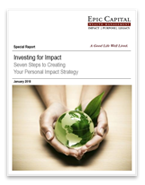Cash Balance Plans
Dec 4, 2020
In corporate America, pension plans may be fading away. Only 14% of Fortune 500 companies offered them to full-time employees in 2019. In contrast, legal, medical, accounting, and engineering firms are keeping the spirit of the traditional pension plan alive by adopting cash balance plans.1
Owners and partners of these highly profitable businesses sometimes get a late start on retirement. Cash balance plans give them a chance to catch up since these defined benefit plans are age-weighted: the older you are, the more that can sock away each year, up to $336,000, depending on your age.2
How does a cash balance plan differ from a traditional pension plan? In a cash balance plan, a business or professional practice maintains an account for each employee with a hypothetical “balance” of pay credits (i.e., employer contributions) plus interest credits. The plan’s objective is to pay out a pension-style monthly income stream to the participant at retirement – either a set dollar amount or a percentage of compensation. Lump-sum payouts are also a choice. Another important factor to keep in mind is that cash balance plans are commonly portable: the vested portion of the account balance can be paid out if an employee leaves before a retirement date.3
An employer takes on responsibility with a cash balance plan. The plan document states that annual contributions must be made—either in the form of a percentage of pay or a lump sum. An actuary needs to advise the employer, and help the business determine the yearly contribution needed to appropriately fund the plan. The employer effectively assumes the investment risk, not the employee.3
Cash balance plans must cover at least 50 employees or 40% of the firm’s workforce, whichever is lesser. They can be used in tandem with 401(k) plans.4
Benefits are based on career average pay. In a traditional defined benefit plan, the eventual benefit is based on a 3- to 5-year average of peak employee compensation multiplied by years of service. In a cash balance plan, the benefit is determined using an average of all years of compensation.3
Cash balance plans can be less sensitive to interest rates than some pension plans. As rates rise and fall, liabilities in a traditional pension plan fluctuate. This may open the door to either overfunding or underfunding (and underfunding is a major risk right now with such low interest rates).
A cash balance plan cannot be administered with any degree of absentmindedness. It must pass yearly non-discrimination tests; it must be submitted for Internal Revenue Service approval every five years instead of every six. A plan document must be drawn up and periodically amended, and there are the usual annual reporting requirements.
Ideally, a cash balance plan is run by highly compensated employees (HCEs) of a firm who are within their prime earning years. In the ideal scenario for non-discrimination testing, the HCEs are 10-15 years older than half (or more) of the company’s workers.
If trouble occurs and a company flounders, cash balance plan participants have a degree of protection for their balances. Their benefits are insured up to their maximum value by the Pension Benefit Guaranty Corporation (PBGC). If a plan is terminated, plan participants can receive their balances as a lump sum or request periodic payments.
For additional insights and resources, be sure to sign up for our Weekly Market Commentary, follow our YouTube channel where we regularly post our Epic Market Minute videos, follow us on LinkedIn, or like us on Facebook. And as always, please don’t hesitate to reach out to a dedicated service professional at Epic Capital.
Tags: Employee Benefit Planning, Financial Planning, retirement, Retirement Planning, Retirement Tax Savings, tax guide, Wealth Building
More Insights
It seems like we just can’t stop talking about the Federal Reserve (Fed). After an aggressive rate hiking campaign that we think ended last year, markets were expecting the Fed to start cutting interest rates as early as next month. But withan economy that continues to surprise to the upside, along with inflationary pressures that … Continue reading “Market Update – The Patient Pause”
A thoughtful retirement strategy may help you pursue your many retirement goals. That strategy must consider many factors, and here are just a few: your income needs, the order of your withdrawals from taxable and tax-advantaged retirement accounts, the income tax implications of those withdrawals, and sequence of return risk.
Losing a spouse is a stressful transition. And the added pressure of having to settle the estate and organize finances can be overwhelming. Fortunately, there are steps you can take to make dealing with these matters less difficult.
Ever hear of critical illness insurance? This isn’t standard-issue disability insurance, but a cousin of sorts. With people living longer, it is a risk management option entering more people’s lives.
Following Iran’s missile and drone strikes on Israel over the weekend and the apparent escalation likely in any Israeli response, stocks fell sharply during Monday’s trading session. We examine the latest developments in the Middle East conflict, how stocks have reacted historically to geopolitical events, and the possible impact on markets moving forward.
Services
Epic Capital provides the following comprehensive financial planning and investment management services: Learn More >


 Top of Page
Top of Page











